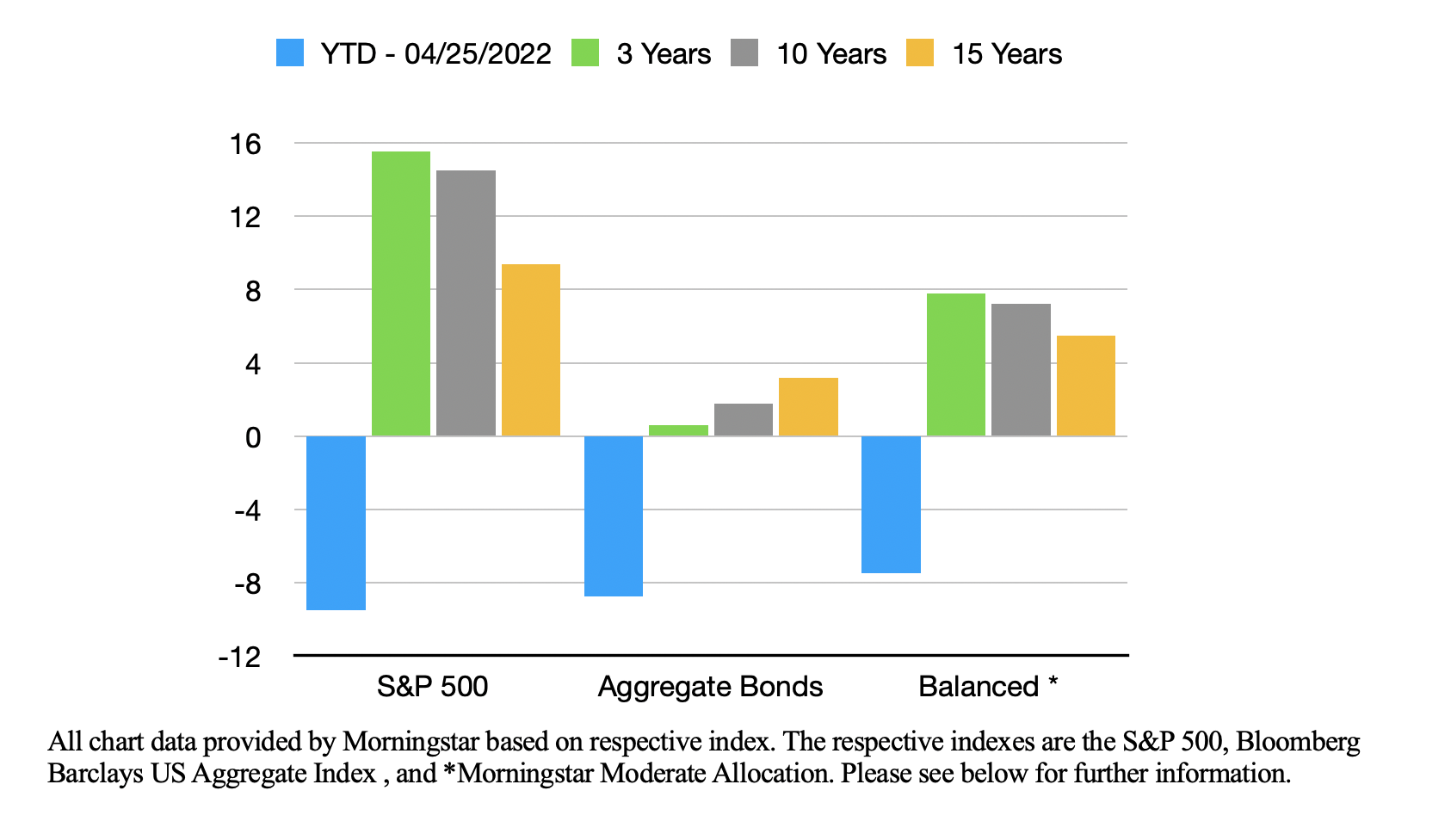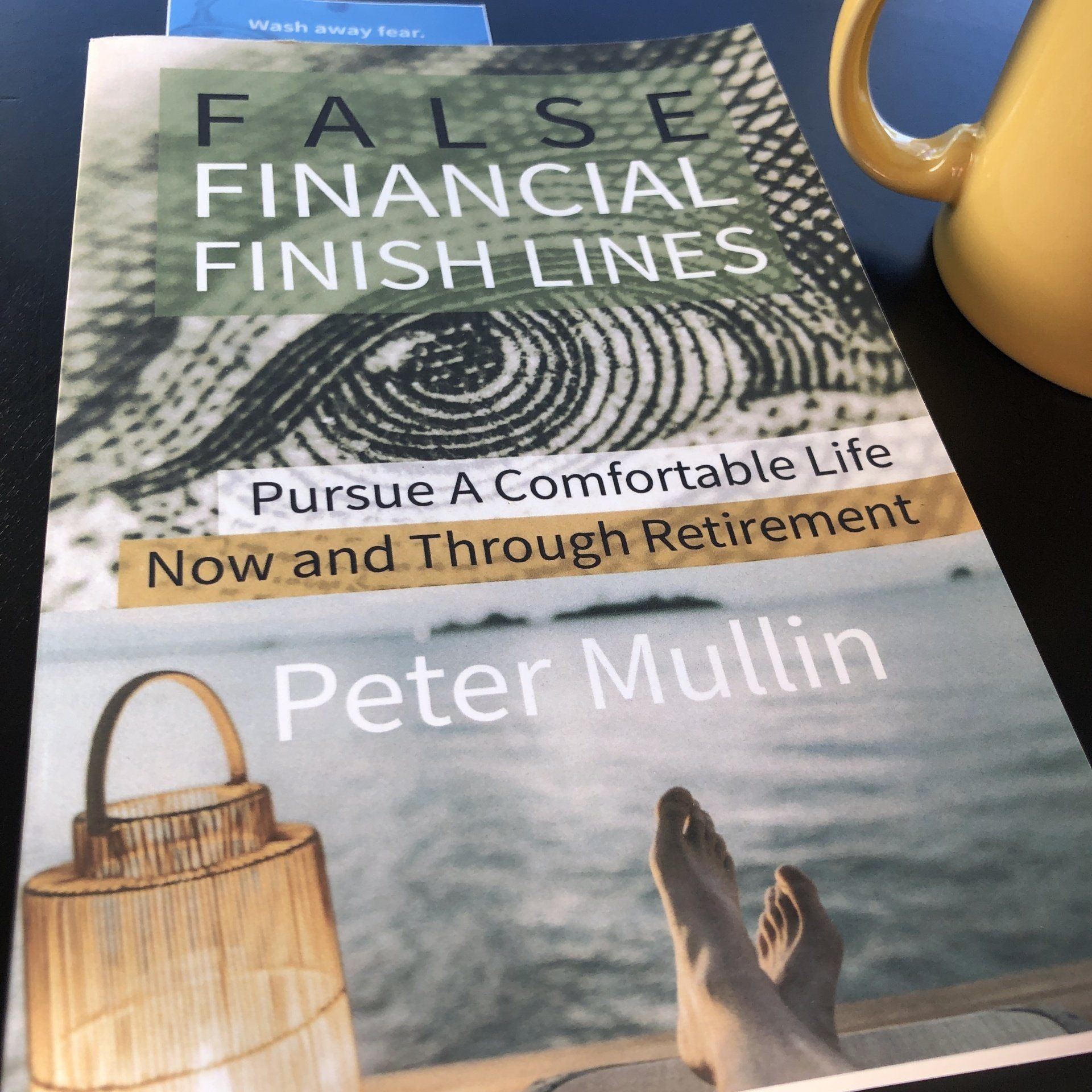My best advice in a manic market

My best advice in a manic market
By Peter Mullin, a Financial Consultant
powered by LPL Financial - serving almost 20,000 advisors nationwide.
Clients, we have never been in it for last year's results. Instead, we are betting on future potential.
We know life is not perfect. But over time, it will be okay.
There are life lessons we can draw on from investing.
One lesson involves taking bad days with a grain of salt. Things have always gotten better. My best advice is to keep the long view in mind during times that test our wits.
But there is war. There is hyperinflation. This market is out of control. I can't lose anymore.
These thoughts are all bricks in the wall of worry we all face. We lose when we jump out of our long-term strategy and reassure ourselves that we can always get back in. Keep your seatbelts fastened. And really. Please stop looking at your daily portfolio balance.
Here is a quick chart and reminder of how the long-term has felt:

I want you first to note the blue on this simple bar chart. The blue is that index’s YTD negative results. We, as investors, do not like negative routs. (I’m not particularly eager to lose.) How has a portfolio been doing lately? And compared to what? Bonds seek stability in a tumultuous market. This year has seen the rug pulled from bond stability – so far. (Chart on the next page.)
And so when you blend stocks and bonds, we still get a pretty decent drawdown. But put our 20/20 glasses on for a moment. Ask if we should have been heavily invested in bonds over the past three years. Would our money have grown substantially? How about the past 10 years (See the grey bar.)?
Folks, the 1950's, Nobel-prize winning idea called diversification has not gone out of style. Likewise, the balanced (*Morningstar Moderate Allocation) approach has not gone out of style.
The good news is that we may have a good entry point to rebalance our portfolios into bonds and equity. Why? Please read LPL Financial Research's blog entry: Finally Some Income for Your Fixed Income
Let's keep moving through 2022 together. We face the wall of worry together. I am here if you are wondering if you are doing Okay.
Carry on!
Peter Mullin, AAMS®
Data referenced: All chart data provided by Morningstar based on respective index. Please see below for further information. The respective indexes are the S&P 500, Bloomberg Barclays US Aggregate Index , and *Morningstar Moderate Allocation. Balanced* represents Morningstar Moderate Allocation. This portfolio can have 50-70% invested in broad equities and the remainder would be in fixed income and cash (Reference Morningstar, Inc). The US Aggregate Bond Index or Bloomberg Barclays US Aggregate Index The S&P 500 is an aggregate of 500 companies. All performance referenced is historical and is no guarantee of future results.
The S&P 500 is an unmanaged index which cannot be invested into directly. Unmanaged index returns do not reflect fees, expenses or sales charges. Index performance is not indicative of the performance of any investment. Past performance is no guarantee of future results.
This material is for general information only and is not intended to provide specific advice or recommendations for any individual. There is no assurance that the views or strategies discussed are suitable for all investors or will yield positive outcomes.
Investing involves risks including possible loss of principal.
References to markets, asset classes, and sectors are generally regarding the corresponding market index. Indexes are unmanaged statistical composites and cannot be invested into directly.
Index performance is not indicative of the performance of any investment and do not reflect fees, expenses, or sales charges.
Securities and Advisory services offered through LPL Financial, A Registered Investment Advisor, Member FINRA/SIPC.
- Mullin's take on the "4% Retirement Rule"
- Navigate "Bad Portfolio Weather"
- Tips to Optimize Social Security







Articles and Assets
What are your Priorities?
Well it’s the end of the year. I just searched on Google for “market outlook 2018.” I came up with a little over 58-million “results.”
So should you be investing in stocks in 2018? The quick answer: It’s likely a prudent part of your portfolio. But it depends on your circumstances, right?
It’s apparently popular to throw your hat in the ring.
A mantra that you hear among disciplined professionals is to “stay the course.”
Then you hear “sell high, buy low.”
Who’s right?
The relief of a disciplined strategy is that it can be tailored to you. And tailor we think you should.
Yes, it’s possible that an investor may not utilize stocks in their portfolio at all. Or you may decide to go “all in” with a diversified stock portfolio.
(Side effects from tailoring a strategy may include increased confidence & persistence, apathy toward daily market reports, and increased focus on what really matters.)
Let’s begin with the “Why” of investing for you. Then you can request 15-minutes on the phone discuss your “how.”
So “Why Should You Invest”
Life changes and our “why” of investing ought to transform with life. Some invest for sport – they like the risk/reward of investing – they’re in it for the thrill. I don’t hang with this crowd.
Most of us ought to invest for things we want. Our money & our goals are serious. By investing in a diversified portfolio we can pursue things we want.
1. Living A Comfortable Retirement: Retirement is a noun. It’s up to you to really design and live a retirement that reflects you.
2. Purchasing a Home: Home is a place to live. It can take a down payment.
3. Passing an Inheritance on to Family:
4. Student Loan Shield: This idea is important for many Millennial graduates. Student loans can dominate your budget. But instead of accelerating those payments, what if you paid your required payments, and then invested the additional money that you were going to pay against your loan balance?
5. Emergency Reserves: You probably have read that it’s prudent to keep a relative healthy amount of cash in your checking/savings. Once you’ve achieved that, then you can consider investing additional funds. Go a step further and consider a non-retirement account for you and your house. You can spend this on cars, vacations or use it just as described in #4.
The Dow Jones has seen positive results, so far, in 2017. It’s unusual and sort of uncomfortable as the independent financial advisor. Why is it uncomfortable?
What would sting & linger longer? Finding $20 in the parking lot? Or finding a $20 parking fine on your windshield?
We’ve been finding a lot of metaphorical “$20’s” (i.e. “positive results”) in our portfolios this year. So the second we find a parking fine (or a few in a row) we’ll be sure to ask if stocks are still the right place to park our money.
Complacency can work against us, Dear Clients. Just keep recalling your long-haul strategy and your “why” of investing.
***
Peter Mullin is an independent financial advisor registered through LPL Financial. He lives in Rogers, MN with his family. He was born and raised in St. Cloud, MN. Mullin Wealth Management is located in Waite Park, MN.
The opinions voiced in this material are for general information only and are not intended to provide specific advice or recommendations for any individual.
Investing involves risk including loss of principal.
There is no guarantee that a diversified portfolio will enhance overall returns or outperform a non-diversified portfolio. Diversification does not protect against market risk.
All performance referenced is historical and is no guarantee of future results.
All indices are unmanaged and may not be invested into directly. No strategy assures success or protects against loss.







